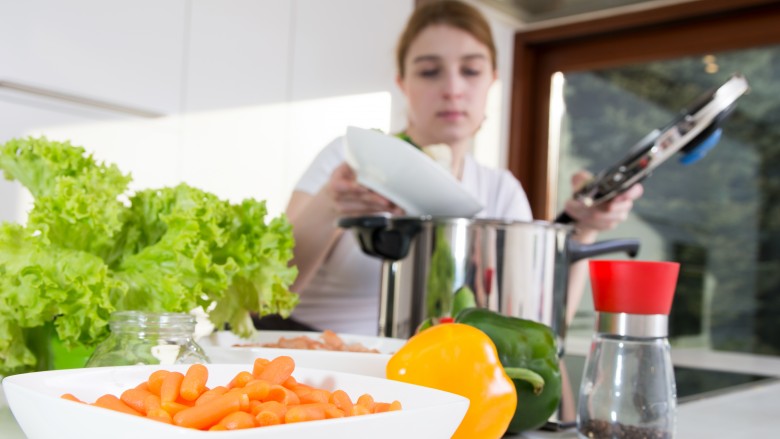Cooking dal can sometimes feel like a daunting task, especially if you don’t have access to appliances like pressure cookers that are commonly used in many kitchens. However, learning how to cook dal without pressure cooker not only empowers you to be adaptable in your cooking methods but also ensures you retain more of the dal’s natural flavors and nutrients. This method also harks back to traditional cooking styles that have been loved by families for generations.
In this guide, well walk you through the delightful process of crafting perfect dal sans pressure cooker, using techniques that ensure you achieve that smooth, creamy texture characteristic of top-tier dal dishes. Well explore a variety of dal types and share some essential tips to enhance your culinary repertoire, serving meals that will warm hearts and satisfy taste buds.

Understanding Dal: The Basics
Dal, a staple in Indian cuisine, is not just a dish but a category for any split pulse that is cooked into a soup-like consistency. Popular varieties include moong dal, toor dal, chana dal, and masoor dal, each bringing unique tastes and health benefits. Given its versatility and nutritional richness, learning to cook dal is a valuable skill that anyone can develop.
Traditionally, a pressure cooker is a preferred tool due to its efficiency in cooking pulses quickly. Yet, it’s possible to replicate its results with basic cookware, a trusty knife, and a solid understanding of the right techniques. Understanding the types of dal and their soaking requirements is crucial. Soaked dal tends to cook faster and more evenly, which is key in manual cooking methods.
The Ingredients
| Ingredient | Quantity |
|---|---|
| Dal of choice (Toor, Moong, Chana, or Masoor) | 1 cup |
| Water | 3-4 cups for soaking and additional as needed for cooking |
| Turmeric Powder | 1 tsp |
| Salt | to taste |
| Ghee or Oil | 2 tbsp |
| Cumin Seeds | 1 tsp |
| Finely Chopped Onions | 1 medium |
| Finely Chopped Tomatoes | 1 large |
| Chopped Garlic | 3-4 cloves |
| Chopped Green Chilies | 1-2 (optional) |
| Fresh Coriander | for garnishing |
Step-by-Step Guide to Cooking Dal Without Pressure Cooker
1. Soak the Dal: Before you start cooking, rinse your dal thoroughly to remove any dirt and soak it for at least 2 hours. This step softens the dal and reduces cooking time significantly. Learn more about soaking techniques.
2. Prepare Your Cookware: While waiting for the dal to soak, you can set up your cookware. You’ll need a deep, heavy-bottomed pot. It’s vital to choose the right pot because a well-distributed heat source ensures even cooking, prevents the dal from sticking, and reduces scorching. You can check our cookware repair tips if needed.
3. Cooking the Dal: Drain the soaked dal and put it in the pot. Add fresh water (about 3-4 cups). Bring the water to a boil, then reduce to a simmer. The key is patience. Cook the dal on a low flame, which allows each grain to absorb water and expand slowly. It usually takes about 45 minutes to an hour. Stir occasionally to ensure it doesn’t stick to the bottom. You can add water as needed, depending on how thick you want your dal.
Creating a Flavorful Tempering (Tadka)
Tempering is where the magic happens; it enhances the flavor profile of your dal by adding aromatic spices and deepening the dish’s warmth.
1. In another pan, heat ghee or oil. Add cumin seeds and let them sizzle for a few seconds.
2. Add finely chopped onions and saut until they turn golden brown. Following this, add garlic, and green chilies, and saut for another minute until the garlic releases its aroma.
3. Mix in chopped tomatoes and cook until they turn soft and mushy, adding a bit of salt to help them break down faster.
4. Once the tadka is ready, carefully add it to your simmering dal. Stir well. Finish with a sprinkle of fresh coriander for that burst of fresh flavor.
Tips for Enhancing Your Dal
Cooking without a pressure cooker requires attention and care. Here are some tips to make your dal stand out:
- Monitor your cooking heat and adjust as necessary. Maintaining a low to medium heat allows better control and prevents boiling over.
- If you prefer a creamy consistency, use a spoon or masher to gently mash some of the dal during the cooking process.
- Experiment with flavors by adding a pinch of asafoetida or dried red chilies in your tempering for a unique twist.
- To maintain the integrity of your dal and cookware, you can look into essential cookware care tips.

Serving Suggestions
This delicious dal can be paired in numerous ways to create a satisfying meal. Serve it with steamed basmati rice for a traditional take, or alongside freshly made naan or roti for a complete experience. Add a dollop of yogurt on the side for a cooling contrast to the dish’s warmth. Whether it’s for a hearty lunch or a cozy dinner, dal is versatile enough to suit any occasion, making it a beloved culinary staple worldwide.
Understanding how to cook dal without pressure cooker truly elevates your skills in the kitchen, bringing home-cooked warmth and traditional flavors to your table. Embracing these techniques not only enriches your love for cooking but also allows you to share the joy found in every spoonful of this cherished dish. Explore more cooking secrets and become a kitchen whiz by visiting our comprehensive food guide.
This article contains affiliate links. We may earn a commission at no extra cost to you.


